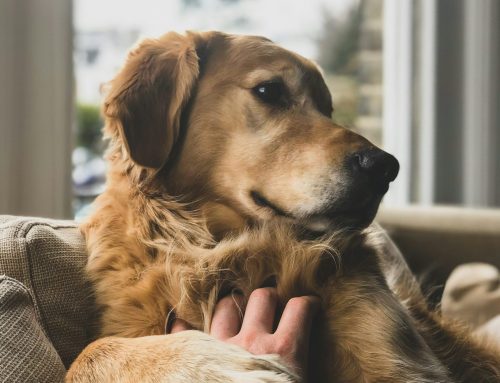Why does my dog keep hopping on three legs around the house at very random times!? Great question. It is very possible that your dog may have a luxating patella. The Patella (aka the knee cap) is supposed to sit right in between the groove of the femur in all
of our cats and dogs. Some dogs may have an abnormality in their anatomy where the patella pops out of this groove when walking. Alternatively, this may never happen on their own, but I may be able to slip it out of this groove with just a small amount of pressure. Both of these are examples of patellar luxation, which is one of the most common orthopedic diseases in dogs. In fact, according to the American College of Veterinary Surgeons, this condition is diagnoses in 7% of all puppies. All dogs can be affected, but smaller breed dogs such as Yorkshire Terriers, Chihuahuas, and Miniature Poodles are more likely to have this condition.

The patella can luxate medially ( towards the middle of the dog) or laterally (towards the outside of dog). Signs that your dog may be affected by a patellar luxation include occasionally holding that leg up when they walk, signs of pain if the knee is touched, and standing posture where the knee is positioned further outside of the body compared to normal. The diagnosis of a luxating patella can be made by the veterinarian feeling the patella and popping it in and out of the groove. X-rays of both legs from the hips down to the knees are also essential to ensure that there are no other underlying orthopedic diseases such as hip dysplasia, cruciate disease, or incomplete growth of one of the bones in the leg. Arthritis is also important to assess on x-rays, as dogs with luxating patellas will have a faster development of osteoarthritis compared to that of a “normal” dog.
Surgery is the treatment of choice if the dog is showing signs of this condition. Surgery should also be considered for dogs that have this condition but are not showing any signs at home of being affected by it. This is because surgery to stabilize the patella in place may help slow down the progression of arthritis. Surgery is always tailored to each specific dog to come up with a plan on how to stabilize the knee. Things that may be performed in surgery include deepening of the groove in the femur, moving and pinning a ridge in the tibia to straighten the patellar tendon, tightening of the fiber capsule around the knee joint, and even loosening or tightening of muscles that may be trying to pull the patella in the wrong direction. Joint supplements such as Dasuquin are also important as they will help support cartilage growth and slow down the development of osteoarthritis.
Surgery is very often successful for most dogs, with the ACVS reporting that over 90% of dog owners were happy with the outcome. At Heartwood Animal Hospital, every patient that we performed surgery on has had a dramatic improvement in their leg function in the year of 2016. If you believe your dog may be affected by this orthopedic condition, please call Heartwood today to schedule a consultation. Our team is passionate and always happy to help treat any condition that may be causing pain and discomfort to your beloved pet.







Leave A Comment